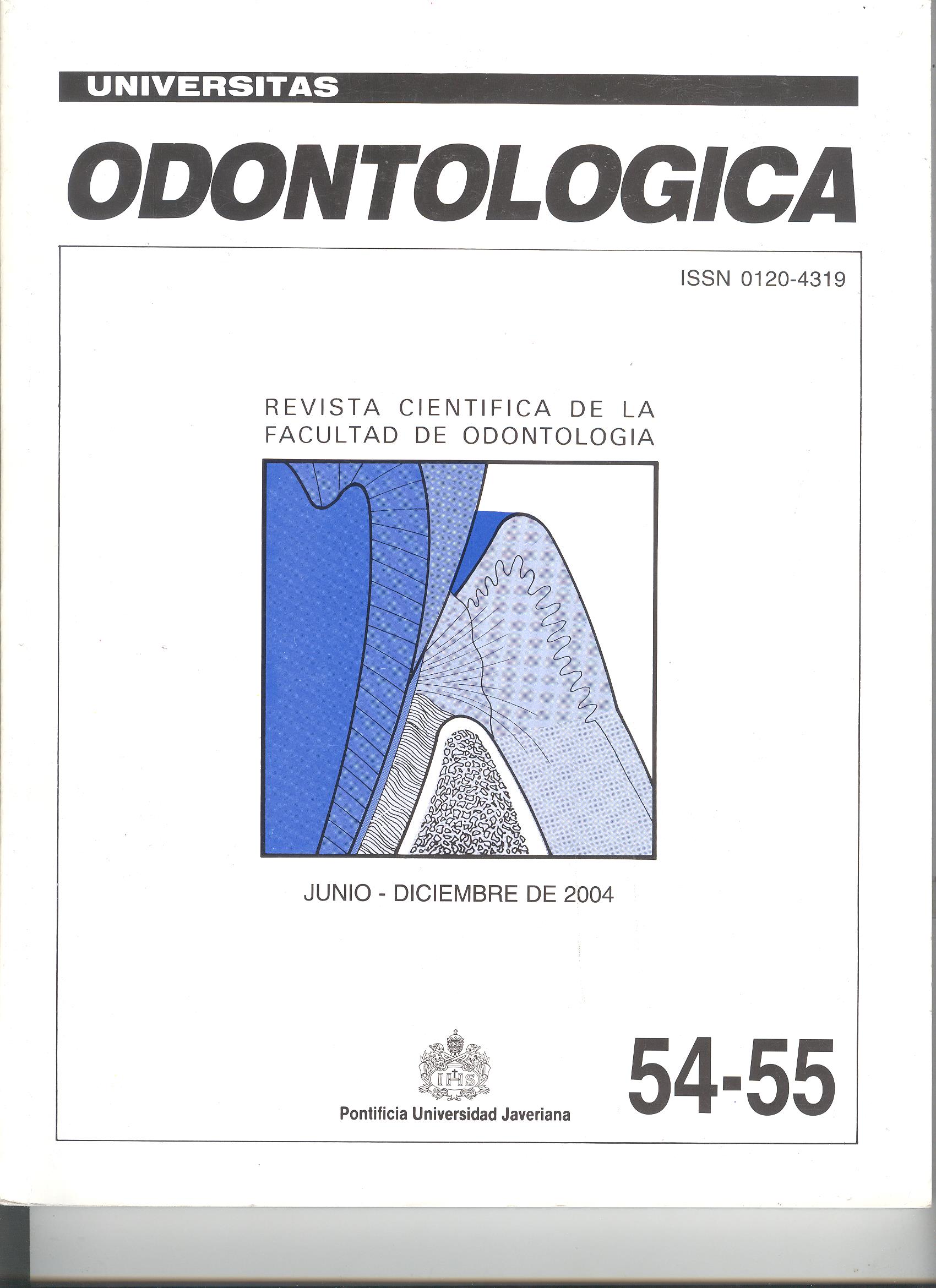Resumen
ANTECEDENTES: se han realizado varias modificaciones a la osteotomía sagital mandibular (OSM) intraoral para disminuir sus complicaciones, que siguen presentándose posiblemente por desconocimiento de la anatomía. OBJETIVO: observar las relaciones anatómicas intraóseas en rama y cuerpo mandibular con la técnica OSM. MÉTODOS: A 13 mandíbulas humanas secas se les realizaron 26 OSM modificadas, previo mapeo: puntos A, B, C. Se localizaron: la língula en sentido vertical respecto de una línea B-C en relación con otra horizontal perpendicular a la anterior que se inicia en A; la língula en sentido horizontal con respecto a las líneas originadas a partir de A y B; y los bordes superior e inferior del canal dentario con respecto al borde superior o inferior del cuerpo mandibular distal al segundo molar. RESULTADOS: la distancia en sentido vertical, a partir de la confluencia de las líneas oblicuas interna y externa, al sitio de la osteotomía lingual fue de 8.1 mm (límite superior=9.3 mm, e inferior=6.4 mm). La distancia del borde superior del cuerpo mandibular al superior del canal dentario, distal al segundo molar, fue de 7.8 mm (límite superior= 8.7 mm e inferior=6.9 mm). CONCLUSIÓN: No es necesaria la visualización del paquete neurovascular como referencia anatómica para la realización de la osteotomía inicial horizontal. La distancia de 7.8 mm del borde superior del cuerpo mandibular al borde superior del canal dentario, posterior al segundo molar, es un parámetro para dejar un adecuado remanente óseo para la colocación de la fijación interna rígida.
Turvey T. Intraoperative complications of sagittal osteotomy of the mandibular ramus. Incidence and management. J Oral Maxillofac Surg 1985 Feb; 43(2): 504-9
Ruiz C. Modificación de la osteotomía sagital mandibular intraoral. Rev Mex Maxilofac 2000 Ene; 1(1): 5-10
Epker B. Modifications in the sagittal osteotomy of the mandible. J Oral Surg 1977 Feb; 35(2): 157-9
Wolford L. Modification of the mandibular ramus sagittal split osteotomy. J Oral Surg 1987 Aug; 64(2): 146-55
Wolford L, Wilburd M. The mandibular inferior border split: A modification in the sagittal split osteotomy. J Oral Maxillofac Surg 1990 Jan; 48(1): 92-4
Wyatt M. Sagittal ramus split osteotomy: Literature review and suggested modification of technique. J Oral Maxillofac Surg 1997 Feb; 35(2): 137-41
Smith B, Rajchel J, Waite D. Mandibular anatomy as it relates to rigid fixation of the sagittal ramus split osteotomy. J Oral Maxillofac Surg 1991 Feb; 49(2): 222-26
Smith B, Rajchel J, Waite D. Mandibular ramus anatomy as it relates to the medial osteotomy of the sagittal split ramus osteotomy. J Oral Maxillofac Surg 1991 Feb; 49(2): 112-16
Martis C. Complications after mandibular sagittal split osteotomy. J Oral Maxillofac Surg 1984 Jan; 42(1): 101-07
Akal K, Sayan B. Evaluation of the neurosensory deficiencies of oral and maxillofacial region following surgery. Int J Oral Maxillofac Surg 2002 Mar; 29(3): 33-6
Nakagawa K, Ueki K, Takatsuka S, Takazakura D. Somatosensory - evoked potential to evaluate the trigeminal nerve after sagittal split osteotomy. Oral Surg Oral Med Oral Pathol Oral Radiol Endod
Feb; 91(2): 146-52
Yamamoto R, Nakamura A, Ohno K, Michi. K. Relationship of the mandibular canal to the lateral cortex of the mandibular ramus as an factor in the development of neurosensory disturbance after bilateral sagittal split osteotomy. J Oral Maxillofac Surg 2002 Apr; 60(4): 490-5
Schalit C, Jackes S, Turvey T. Incidence of lingual nerve injury following bilateral sagittal split osteotomies. J Dent Res 1995 Oct; 74(10): 1158-64
Mehra P, Castro V, Freitas R, Wolford L. Complications of the mandibular sagittal split ramus osteotomy associated with the presence or absence of third molars. J Oral Maxillofac Surg 2001 Oct; 59(10): 854–8
Reyneke. J, Tssakiris P. Age as a factor in the complication rate after removal of unerupted/ impacted third molars at the time of mandibular sagittal split osteotomy. J Oral Maxillofac Surg 2002 May; 60(5): 645–59
Leonard M. Maintenance of condilar position after sagittal split osteotomy of the mandible. J Oral Maxillofac Surg 1985 Mar; 43(3): 391-2
Bora S. Asymptomatic traumatic neuroma after mandibular sagittal split osteotomy: A case report. J Oral Maxillofac Surg 2002 Oct; 60(10): 1111-12
Greco J, Frehberg V, van Sickels J. Long-term airway space changes after mandibular setback using bilateral sagittal split osteotomy. Int J Oral Maxillofac Surg 1990 Jan; 19(1): 103-8
Ardary W, Tracy D. Comparative evaluation of screw configuration on the stability of the sagittal split osteotomy. Oral Surg Oral Med Oral Pathol 1989 Jan; 68(1): 125-9
Obeid G, Clareance C. Optimal placement of bicortical screws in sagittal split – ramus osteotomy of mandible. Oral Surg Oral Med Oral Pathol 1991 May; 71(5): 665-9

Esta obra está bajo una licencia internacional Creative Commons Atribución 4.0.
Derechos de autor 2004 Universitas Odontologica


